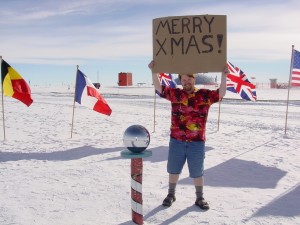If you’ve been poking at the store side of things lately, you may have noticed that the inventories of most everything has dwindled down to zero. This is intentional as I want to clear everything out before I put up the next round of pre-orders. “Why?” you ask. Because I am off to beautiful, scenic Richland, WA for a week of Fun With Radiation. “WHY!?!?” you may ask again. Because Richland, WA is where we’ve hidden Pacific Northwest National Laboratory, AKA the Hanford Site, and they’ve accreted various things relevant to my actual career of playing with the DEADLY RADIATIONS™. So, really it’s almost a vacation, if your definition of vacation includes plutonium and talking about regulations. Regular production will resume after Memorial Day.
And you may be absolutely certain that I am going to sample all of the wares of these fine folks at the Atomic Ale Brewpub. In the interest of Science, of course.
Over the last decade (oh god, it has been that long) I have been asked many times people how the can get to go to Antarctica, most recently by Meredith Yayanos. Well, here’s my list of ways down to the Ice:
The typical way people assume you go to Antarctica is to do Science. As I have attempted to tell folks, the vast majority of people in Antarctica are not scientists but this is still a way down. As an American researcher, the first thing you’ll need is a large research grant. You then submit your research proposal to USAP, the National Science Foundation’s United States Antarctic Program (international researchers may feel free to apply, though many of the signatory nations to the Antarctic Treaty have their own programs). If approved, you’ll be granted an event number, which you should hold on to for dear life as absolutely everything you do in Antarctica will be referenced back to that.
For those of a scientific bent, it is far easier to find someone that has an existing event number, try to modify their proposal to include your research, and sort of be a research subcontractor. Or, if you like their research, go down as a research associate under their project. NOTE: this is why Antarctica is full of undergrads, grad students, and postdocs.
Of course you may fabulously independently wealthy, or have such folks as backers, and don’t want to deal with the USAP and feel like having an expedition to Antarctica on your own. You better have your shit together unless you feel like pulling a Capt. Scott down there because without an event number assigned to your expedition, absolutely no one will help you. Or they will help, grudgingly, and an extremely high price that will be taken out of your hide when your sorry, unprepared ass gets rescued and shipped home…assuming you survive to get rescued.
There are a variety of cruises that “go to Antarctica” that you can sign up for but buyer beware. Many of these cruises on converted Russian fishing vessels count crossing 66° 33′ 44″, the Antarctic Circle, as going to Antarctica. Some visit islands south of the circle, some play along the peninsula but I don’t know any that do landfall on the mainland. These cruises are also painfully expensive.

But perhaps price is no object to you and you want your hero shot at the ceremonial South Pole. Well, there’s always Adventure Networks that for ~$60k will fly you down, let you do a bit of skiing, take your picture and fly home. Honestly, we Polies looked at these flights with some disdain as we contemplated our paychecks and watched 60-70 year olds pile out of the plane, gasping for air at the altitutde, stay for 30min and fly out. That was back when the trip only cost $30k.
If you want to actually work in Antarctica and let someone pay you to be there, there are a variety of contractors that support the USAP mission. The primary support contractor for USAP is Raytheon Polar Services Co (NOTE: this is no longer accurate). Akima Staffing Solutions is also down there as well. This is they way for most anyone else to go to Antarctica if you don’t think you have “science applicable skills” good enough to support the NSF directly as a grantee. Construction workers, cooks, mechanics, custodians, etc.,on average there’s eight people to every one person doing research just to keep the stations running. If you aren’t afraid of scrubbing pans or wielding a shovel, and don’t mind long hours and low pay, you can go to Antarctica. I’m to understand a judge on the federal bench once went on sabbatical as a dishwasher. Of course, you will have to pass the physical and psych qualifications; you have to be crazy enough to want to go to Antarctica, but not too crazy.
Lastly, there is a special Antarctica Artists & Authors Program out of the NSF to promote the creation of works of art inspired by Antarctica. The grant will pay to get you to Antarctica, plus food and berthing once you’re there, but there’s no money for salary or materials. So get your ducks in a row to keep the home fires burning before you go on an inspirational journey. Also, don’t be surprised if you get roped into the odd job or two while you’re there.